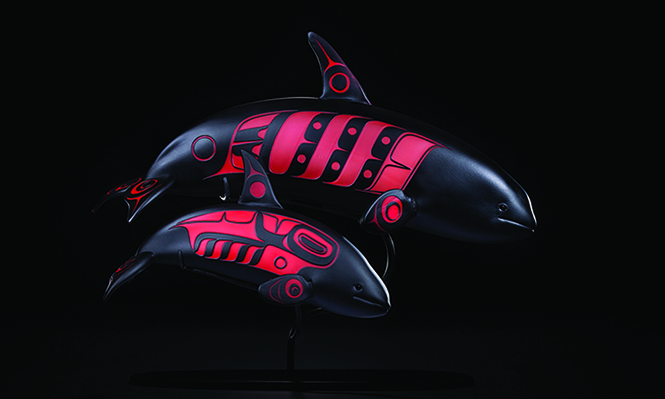
Matriarch (Friday & Singletary)
By Micheal Rios; photos courtesy Stonington Gallery
As November ends, we wanted to offer one more in-depth article in recognition of Native American Heritage Month. Because our people span the color spectrum, it seemed fitting to close out this annual series with a topic that provides stunning, tradition-filled imagery that is as vibrant as our collective culture is. Enter the realm of glass art.
In the vast landscape of artistic expression, the continued evolution of Native artists compels the creative eye to imagine never-before-seen masterpieces that can only be achieved by embracing new technologies and new mediums. Within the realm of glass art, Native creatives are becoming increasingly recognized for their dynamic fusion of tradition and innovation.
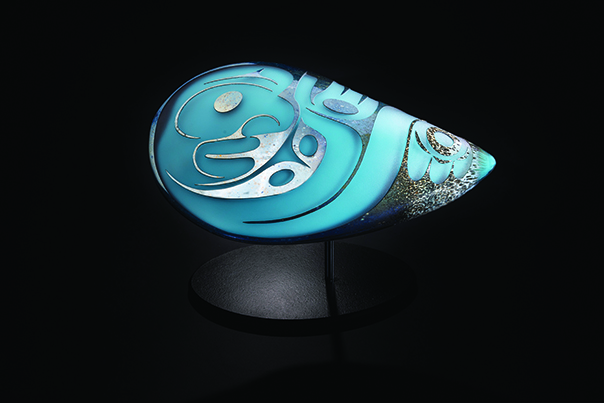
Traditionally rooted in naturally harvested materials like cedar, seashell and leather hide, recent access into the glass realm represents not just a departure from the norm but a transformative journey that symbolizes cultural preservation and the collaborative spirit.
“I kind of came into glass by proxy of being in Seattle when I was a mechanic and tow truck driver. One day I walked into a glass factory and that was it for me. I just knew the course of my life would change after that,” shared artist Dan Friday (Lummi). “You kind of get lost in the process, and that’s what I like about glass is sometimes just going through the motions is what opens your eyes to what is possible. I feel like if you just spend enough time with the material, it will show you what’s available through it.
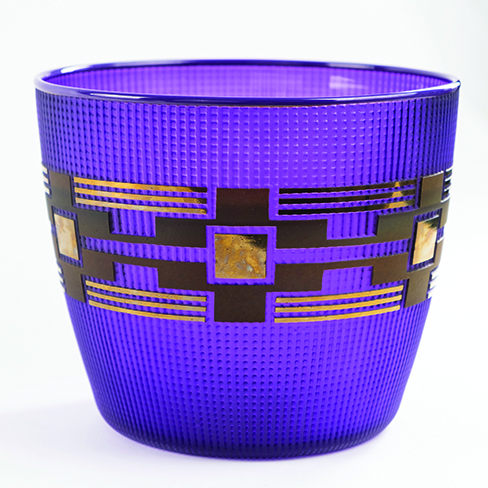
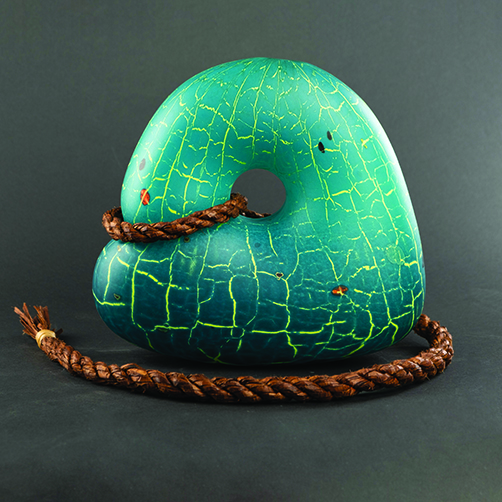
“I’m a master of none, but I try and use all the techniques that I’ve learned,” he continued. “My great-grandfather Joseph Hillaire carved story poles that depicted a traditional story. [Carrying on that legacy], I tell stories that depict the resurgence of Coast Salish culture through my work with glass. As artists, we want to study the work of our ancestors and draw inspiration from them, not just replicate their work. I’m trying to tell my stories in glass, to tell my family stories in this modern medium so they can continue to be seen and appreciated.”
For millennia, our art has served as an expressive storyteller, weaving tales of cultural heritage through mediums like story poles, basketry, and all forms of regalia making. However, a new chapter is unfolding before us as boundary-pushing artists explore the possibilities of fusing culture and glass with the help of a 2,000 degrees Fahrenheit furnace.
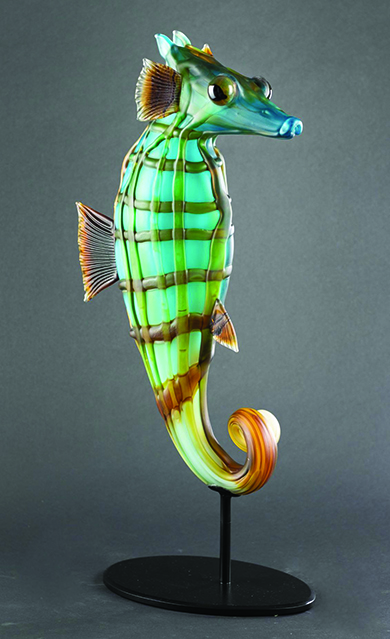
This shift isn’t a rejection of tradition, instead, it’s a harmonious blend of the old and the new. Glass, with its flexibility and luminosity, provides an exciting canvas for artists to narrate their cultural stories with a modern twist.
One striking aspect of this evolution is the deliberate mixing of Salish symbols and Native iconography into the glass medium. Artists draw inspiration from their cultural roots, infusing their creations with symbols representing animals, spirits, and classic Coast Salish formline. The result is a visually captivating artwork that carries a thoughtful cultural significance, forming a bridge between the traditions of our ancestors and the present generation’s unrestricted freedom to express culture in most creative ways.
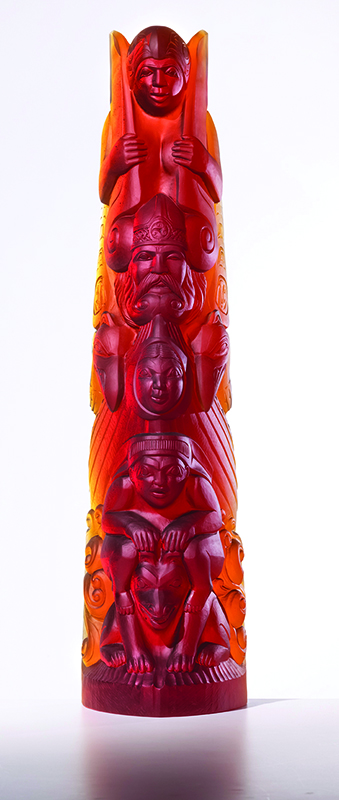
Two Ravens pole (Singletary)
“I always say that Native culture has a defining historical connection to glass because it came to us through trade beads,” explained artist Preston Singletary (Tlingit). “Glass was something that was special to our ancestors who traded for glass beads or glass shards. Eventually, it was adopted into the culture and used for ornamentation, trade, and other creative means.
“I like the idea of glass having a sense of permanence, but it’s also very fragile, “he continued. Preston is renowned for his unique style of carving glass through sandblasting, which he uses to reveal layers of color and meaning. “When I work with the material of glass, I feel like it brings this new dimension to Indigenous art. It really has an opportunity to draw people in and show them aspects of our culture previously unseen in the contemporary art world.”
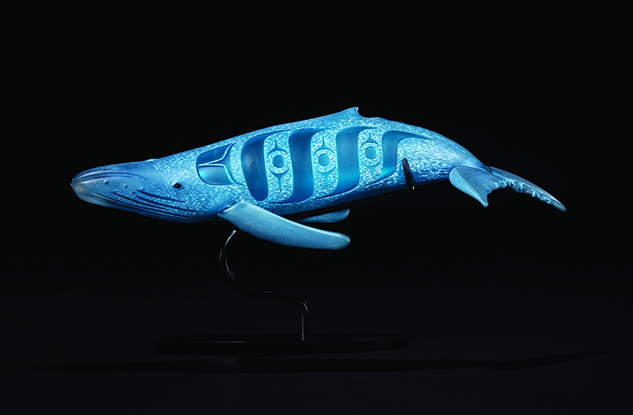
The journey into glass art has been made possible through educational programs, workshops, and collaborative initiatives. Exposure to glassblowing techniques and working with non-Native artists, like Dale Chihuly and his apprentices, has empowered Native American artists to explore new creative horizons. These collaborations serve as crucibles of molten ideas, where traditional knowledge converges with modern innovation.
An admirable aspect of this evolution is the commitment to cultural preservation. Native glass artists, while embracing the newness of glass as a medium, remain committed to celebrating and preserving their cultural heritage. Each stunning piece becomes a flame-cut canvas for storytelling and a luminescent tribute to our surroundings.
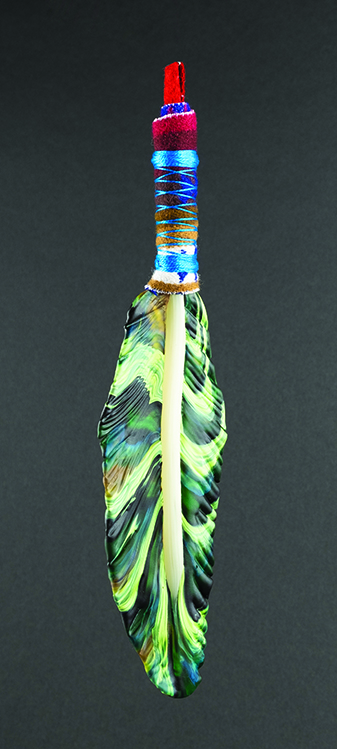
“I was born in a house with no water and no electricity on Lopez Island. My childhood was a lot of being out in the woods and playing near the water,” said artist Raven Skyriver (Tlingit).
“I draw on those experiences as a young kid still to this day as inspiration. My work is almost exclusively derived from the marine ecosystem. I attempt to place the creatures back in their environment by capturing the fluid nature of molten glass and transferring it into the perceived weightlessness of a swimming creature. I always strive to imbue the work with a hint of life.”
As these glass creations find homes in galleries, museums, and the broader art market, a new chapter in the narrative of Indigenous artistry is written. Authored by Native American artists unafraid of accessing their skills of adaptability passed down from generations of cultural creatives who embraced the new to pass down the old.